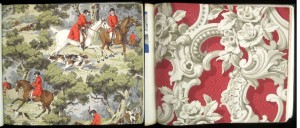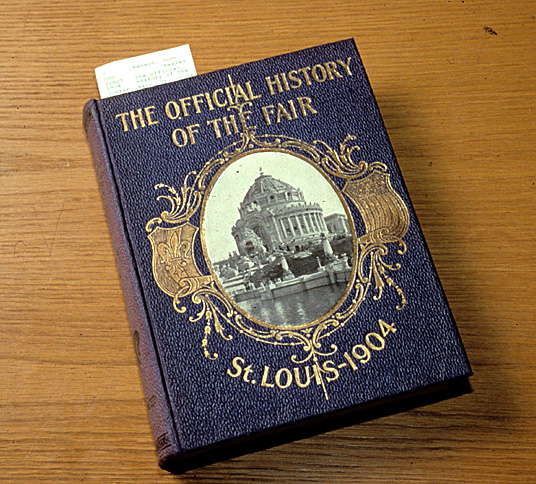In June, we highlighted hand-folded ice cream containers. Because July is National Ice Cream Month, we decided to highlight another ice cream related item. This month we are highlighting an 1889 American Machine Co. trade catalog illustrating ice cream freezers.
Smithsonian Libraries and Archives / Unbound
Zuber et Cie, founded in 1797 by Jean Zuber, is one of the most important manufacturers of hand blocked and scenic wallpapers. In 1804, Zuber produced one of the earliest scenics called “Vue de Suisses,” and they continue to be known for the quality of their wood block printing. This rare catalogue documents Zuber’s work that reflects American tastes in the late 1920s. A few of the samples also directly relate to wallpapers in the Cooper-Hewitt National Design Museum’s Wallcoverings Department collection. To adopt Hand blocked wall papers, visit our website or call 202.633.2241. 
At this time of year, those of us in the U.S. often find our eyes turned skyward to admire a brilliant array of colors lighting up the night sky in celebration of America’s independence. Up until about a hundred years ago, a colorful display of another kind filled the North American skies, and not just on the fourth of July. Jewel-colored Carolina parakeets (Conuropsis carolinensis) traveled in huge, noisy flocks from southern New York and Wisconsin to the Gulf of Mexico, favoring old forests along rivers. Although they looked tropical, Carolina parakeets didn’t migrate south in the winter but weathered the cold.
 While cataloging Polynesian Researches during a Residence of Nearly Eight Years in the Society and Sandwich Islands (London: 1831-1833; DU510 .E47 1831 SCNHRB), a transfer from the Department of State’s library to the Joseph F. Cullman 3rd Library of Natural History, I was intrigued by the title page vignette in the fourth volume of the set. Depicted in this little engraved scene is a group of surfers riding a break on narrow planks. Wondering if it was an early representation of the sport, I naturally turned to Google, where a search turned up the information that it is often cited as the first illustration of surfing, at least in the Western Hemisphere.
While cataloging Polynesian Researches during a Residence of Nearly Eight Years in the Society and Sandwich Islands (London: 1831-1833; DU510 .E47 1831 SCNHRB), a transfer from the Department of State’s library to the Joseph F. Cullman 3rd Library of Natural History, I was intrigued by the title page vignette in the fourth volume of the set. Depicted in this little engraved scene is a group of surfers riding a break on narrow planks. Wondering if it was an early representation of the sport, I naturally turned to Google, where a search turned up the information that it is often cited as the first illustration of surfing, at least in the Western Hemisphere.
 This past week at the American Library Association’s Annual Conference, Gale, part of Cengage Learning, launched two new products based on Smithsonian collections. The products, Trade Literature & the Merchandizing of Industry and World’s Fairs and Expositions: Visions of Tomorrow, featured many items from the Smithsonian Libraries.
This past week at the American Library Association’s Annual Conference, Gale, part of Cengage Learning, launched two new products based on Smithsonian collections. The products, Trade Literature & the Merchandizing of Industry and World’s Fairs and Expositions: Visions of Tomorrow, featured many items from the Smithsonian Libraries.
The story of the last Passenger Pigeon and the disappearance of the Great Auk, Carolina Parakeet, and Heath Hen reveal the fragile connections between species and their environment. To help tell their story, the Smithsonian Libraries, Biodiversity Heritage Library, and the National Museum of Natural History have curated a joint exhibit entitled Once There Were Billions: Vanished Birds of North America which opened June 24 in the National Museum of Natural History. Over the next several weeks, we’ll be highlighting each of the four birds with content from the exhibition and illustrations from BHL.
The Cooper-Hewitt National Design Library owns many types of pattern books for architecture, textiles, wall coverings, and ornament for use by designers. Among our more unusual “how to” pattern books and trade catalogs are two recently digitized hair jewelry pattern books – The jewellers’ book of patterns in hair work and Charles T. Menge’s price list of ornamental hair jewelry and device work.

